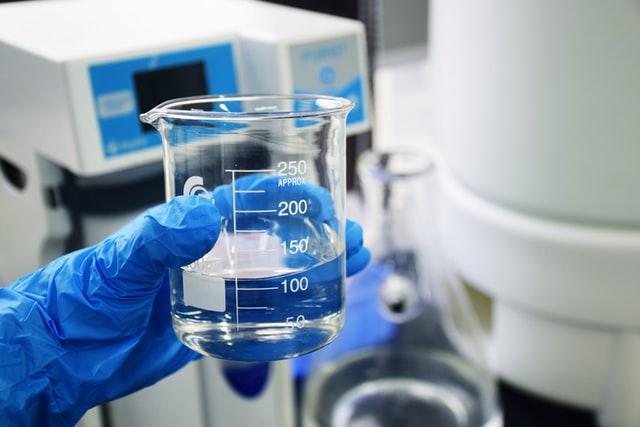The water that comes out of your tap looks clear, but that does not mean it is free from contaminants. To truly know whether your water is safe to drink, you should schedule water testing every year with a certified laboratory. Harmful chemical and biological contaminants can end up in the water you drink.

There are several contaminants to watch out for. In this article, we will go over the most common ones and describe how they are hazardous to your health. When your water testing comes up positive for any of these, you will be able to protect yourself against ingesting them by taking advantage of water purification technologies and procedures.
Lead
Lead is a very toxic contaminant that can induce health issues such as anemia, neurological damage, and severe psychological disorders. The way it normally gets into the water supply is from the corrosion of plumbing that transports water, as well as industrial pollution. There should be no more than 0.015 mg/L of lead in your drinking water.
How Lead Gets into Your Drinking Water
Arsenic
Drinking water with too much arsenic can cause issues such as an irregular heartbeat. This is a natural-occurring toxin that can also stem from industrial activities. There should be no more than 0.010 mg/L of arsenic in your drinking water.
Radon
The biggest issue with radon is that your chance at getting lung cancer shoots up. It’s the second biggest cause of lung cancer after smoking. It is a gas that comes from the breakdown of radioactive uranium and can get into water from the bedrock. There should be no more than 10,000 pCi/L of radon in your water.
Coliform
Coliform are bacteria that can cause gastrointestinal ailments. They sometimes contaminate water supplies, with any amount being potentially harmful. It is recommended that there be a complete absence of coliform in drinking water.
E. coli Bacteria
E. coli bacteria can induce severe abdominal cramps, bloody diarrhea, and vomiting. It is a bacteria that can easily spread from things in the environment, such as animals and humans, into the drinking water supply. There should be a complete absence of E. coli bacteria in drinking water.
Nitrite
Nitrites in drinking water can be particularly damaging to children under six months of age, given the high risk of blue baby syndrome. Areas of heavy pollution generally have higher levels of nitrites. The recommended level should be below 1.0 mg/L.
Nitrate
Side effects of ingesting nitrates include nausea and dizziness. Fertilizer runoff, industrial waste, and leaching from landfills are all sources of nitrate contamination. There should be no more than 10 mg/L in drinking water.
Chloride
Too much chloride in drinking water can cause it to taste salty. There should be less than 250 mg/L of chloride in drinking water. Anything higher causes corrosion.
Calcium
Too much calcium in drinking water can lead to heart issues and reproductive failure. There should be between 40 and 80 ppm of calcium in drinking water. Anything more would make the water “hard” where it contains an excessive amount.
Sodium
A major side effect of excessive sodium intake is high blood pressure. There should be no more than 250 mg/L of sodium in drinking water. An even more restrictive limit of 20 mg/L is advised for people on low sodium diets.
Iron
Too much iron in water can cause it to taste bitter or be astringent. There should be no more than 0.3 mg/L of iron in drinking water.
Manganese
Too much manganese in drinking water will give it an off-putting taste. There should be less than 0.05 mg/L of manganese in any water or beverage you drink.
Magnesium
It is difficult to ingest too much magnesium. Although rare, it is possible that an irregular heartbeat can arise with highly excessive amounts of magnesium. People more sensitive should stick to levels of 100 mg/L when it comes to magnesium in the water. For the average individual, levels up to 500 mg/L are fine.
Fluoride
Too much fluoride in drinking water leads to skeletal fluorosis. This is something that occurs naturally in the environment, yet sometimes is added artificially into municipal water supplies after higher levels. There should be no more than 4.0 mg/L of fluoride within drinking water. Anything over 2.0 mg/L can start causing teeth staining.
Copper
Excessive copper in drinking water can cause an unpleasant taste in water. It can also stain porcelain. A physical side effect would be gastrointestinal tract irritation. There should be no more than 1.3 mg/L of copper in drinking water.
pH
While not a contaminant, the pH range of drinking water should stay between 6.5 and 8.5. A pH of 7 is neutral, meaning anything below it is acidic, while anything above it is basic. Water with a low pH can cause corrosion in pipes, which causes leaching of toxic metals. Water with a high pH can make water hard and cause it to taste bitter.
Toxic Swimming Pools Making People Sick
Hardness
Water hardness is the result of minerals building up in water. The common ones are calcium, magnesium, and silica. Too much of these minerals in water can cause scaling in water systems, which can lead to problems. The recommended treatment is 150 mg/L.
Get Your Water Tested
As you can see, there are many contaminants that can be lurking in your drinking water. It is a good idea to conduct water testing at least once a year, so you can be sure your water is free of anything that can adversely affect your health.






